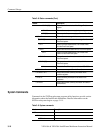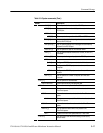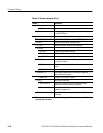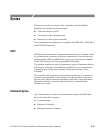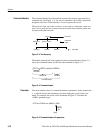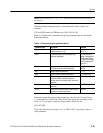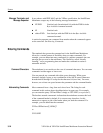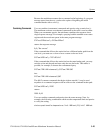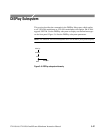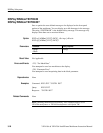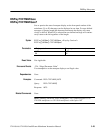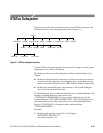
Syntax
3–24
VX1410A & VX1420A IntelliFrame Mainframe Instruction Manual
In accordance with IEEE 488.2 and the VXIbus specification, the IntelliFrame
Mainframe accepts any of the following message terminators:
H LF^END Linefeed code (hexadecimal 0A) with the END bit in the
Byte Available command asserted.
H LF Linefeed code
H <dab>^END Last data byte with the END bit in the Byte Available
command asserted.
A semicolon separates one command from another when the commands appear
on the same line. See Entering Commands.
Entering Commands
The standards that govern the command set for the IntelliFrame Mainframe
allows for a certain amount of flexibility when you enter commands. For
example, you can abbreviate many commands or combine commands into one
message that you send to the mainframe. This flexibility, called “friendly
listening,” saves programming time and makes the command set easier to
remember and use.
The mainframe is not sensitive to the case of command characters. You can enter
commands in either upper or lower case.
You can precede any command with white space characters. White space
characters include a space or any combination of the ASCII control characters
hexadecimal 00 through 1F except for the character 0A (new line). You must,
however, use at least one space between the parameter and the command header.
Most commands have a long form and a short form. The listing for each
command in this section shows the abbreviations in upper case. For example,
you can enter the query SYSTem:ERRor? simply as SYST:ERR? (or syst:err?).
The brackets around a mnemonic indicate that the mainframe assumes this level
of the command header by default. It is not necessary, therefore, for this
mnemonic to appear as part of the header when you send the command. For
example, you can abbreviate the command
STATus:OPERational[:EVENt]?
to
STAT:OPER?
Message Terminator and
Message Separator
Command Characters
Abbreviating Commands



